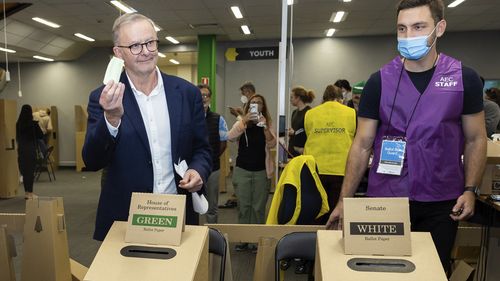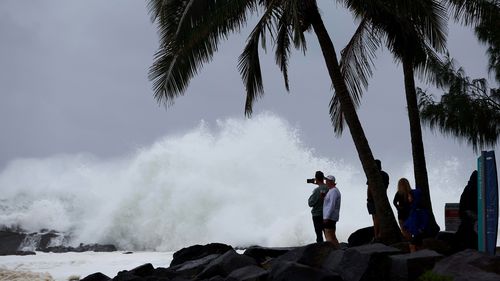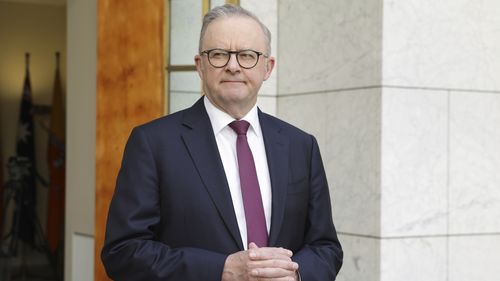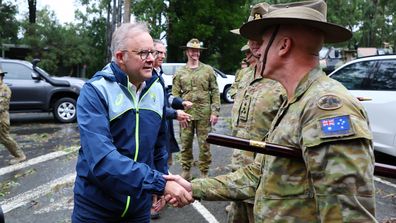The cyclone blew away an April election, so when will it be held now?
So when will Australians actually head to the polls? This is what we know about when the election can and will be called.

How has ex-Tropical Cyclone Alfred impacted the election date?
April 12 had long been mooted as the most likely date for the election because it was a Goldilocks weekend: late enough that the federal campaign wouldn’t overlap with the WA state election, but early enough that it would avoid the Easter and Anzac Day long weekends, as well as the need to hold an early budget.
However, Cyclone Alfred put Albanese in a difficult position.
Elections are traditionally announced on Sundays in Australia, and the last Sunday an April 12 election could have been called was March 9, as law requires at least 33 days between the election being called and held.
But that would have required the prime minister to leave Brisbane while communities in south-east Queensland and northern NSW were inundated with floods – hardly a vote-winning move – as he has to be in Canberra to call the vote.
As such, as Alfred inched towards the coast on Friday night, Albanese made it clear he would not be calling the election for April 12, saying “that’s correct” when asked by the ABC’s 7.30 if he was “categorically ruling out an election being called Sunday or Monday”.

“I have no intention of doing anything that distracts from what we need to do,” he said.
“And what we need to do is to look after each other at this difficult time. This is not a time for looking at politics.”
So when will the election be held?
The problem is, the two options immediately after April 12 are a no-go, as they’re both long weekends. April 19 falls in the middle of Easter, while April 26 is the day after Anzac Day.
That leaves only three possible dates: May 3, May 10 and May 17.
What has the government said?
Albanese and his senior ministers have consistently batted away questions about when the election would be held.
Even when April 12 was looking a sure-fire certainty, the government refused to be drawn on the speculation.
“Well, May 17 is when the election will be, or before… good try there, I’ll give you points for effort,” Albanese said in late January when he was asked about a mid-April election date.
Treasurer Jim Chalmers has also repeatedly said he was working towards handing down a March 25 budget – something that would not have been compatible with an April 12 election, but would now go ahead.
“The timing of the election is a matter for the prime minister, in consultation with his senior colleagues,” he said on February 18.

“But we’re working towards that budget.”
When he was pressed about election plans on Friday, March 7, Albanese repeated his standard line that his government intended to serve a full term and deliver a budget in March.
“It’s the media that seem to be obsessed by the date of elections. I have read the election would be in August, September, November, December 7, probably passed now,” Albanese said in November.
“I support four-year terms, and I wish it was four-year fixed terms so this obsession with dates that begins halfway through a term didn’t continue.”
Now, though, we’re essentially at a full term, as Chalmers has noted.
“Regardless of the decision the prime minister takes, an election is more or less imminent,” he said.
Why is May 17 the last day possible for the federal election?
There are a series of requirements in the constitution that set out when an election has to be held.
Terms in the House of Representatives run for three years, and an election for that house must be held no later than 68 days after they expire.
This time around, those terms expire on July 25, 2025, and the last Saturday in the following 68-day period is September 27.
We’ll definitely head to the ballot box before then, though, thanks to the Senate.
Half of all senators’ terms will expire on June 30, 2025, and an election has to be held for those seats in the preceding year.
Once you factor in various technicalities and practicalities around swearing in, as well as the fact House of Representatives and half-Senate elections are almost always held simultaneously, the latest date the next federal election can be held is May 17, 2025.

What did interest rates have to do with it all?
After the central bank pulled the trigger on its first cut since 2020, Albanese had some good economic news in his back pocket after three years of rising prices and interest rates, which had been seen to increase the chances of an election before May 17.
It’s also worth considering that RBA Governor Michele Bullock indicated a second cut is very unlikely anytime soon.
Had she signalled more relief could be imminent, that may have encouraged the government to push towards a later election, in the hope another cut could fall before polling day.
Ultimately though, this was all before Tropical Cyclone Alfred, and the option of an early election with the rates cut still firmly in everyone’s minds was taken out of the government’s hands.

What about a double dissolution election?
A double dissolution election occurs when both houses of parliament are dissolved and every seat is contested (as opposed to regular elections, when only half the Senate goes to the polls) after a piece of legislation has been repeatedly rejected.
The latest both houses could have been dissolved this term was January 24.
It’s also worth noting that double dissolution elections are quite rare.
While one was held as recently as 2016, only six others have been called in Australian history.
>read more at © 9News
Views: 0
